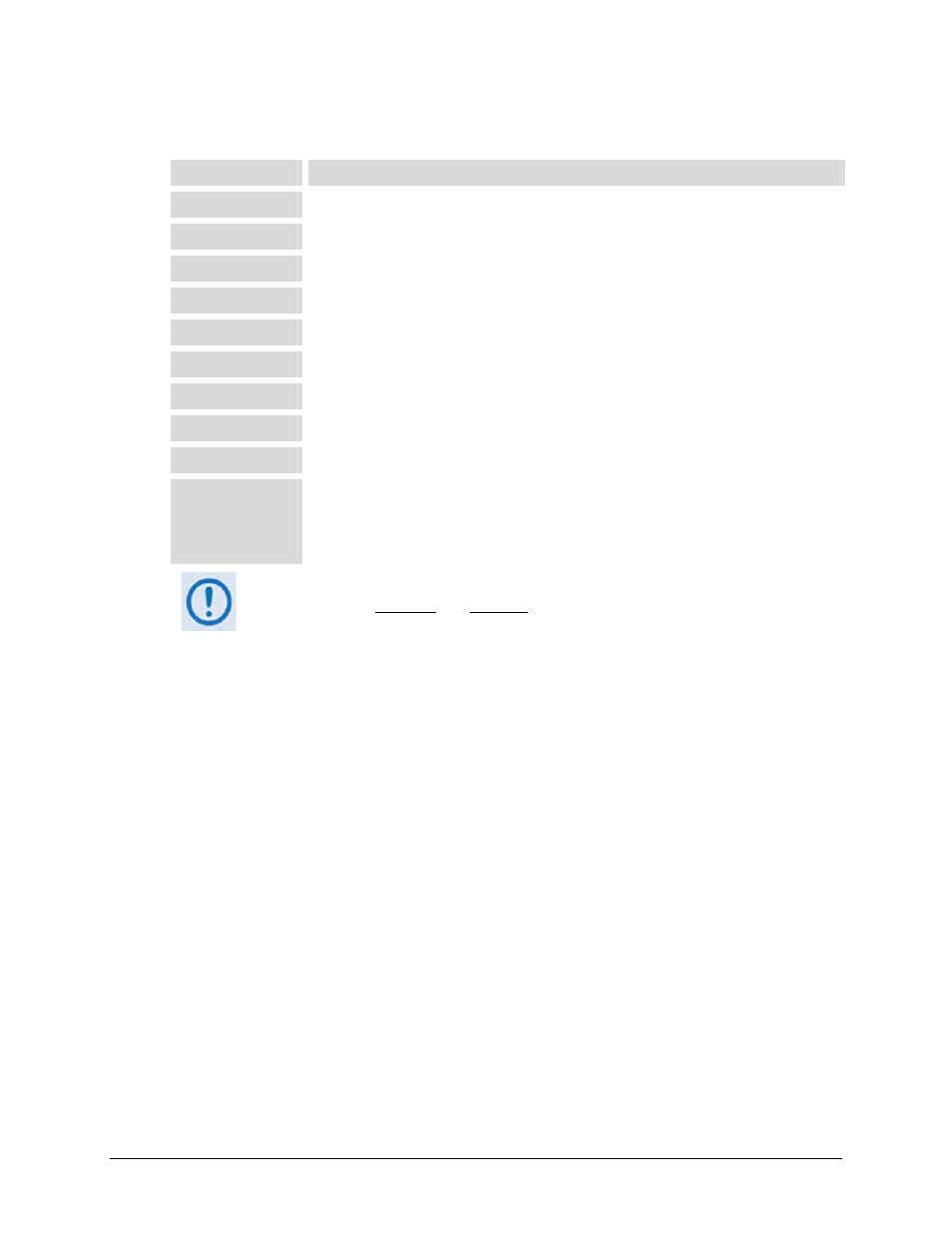Comtech EF Data CDM-625 User Manual
Page 264

CDM-625 Advanced Satellite Modem
Revision 15
Ethernet-based Remote Product Management
MN-CDM625
6–72
This statistics table breaks down the number of PTP packets sent or received on the WAN and
LAN ports as follows:
Row
Description (LAN/WAN Rx/Tx Columns)
Event Port
Number of packets (PTP or other) received on the PTP UDP event-message port.
General Port
Number of packets (PTP or other) received on the PTP UDP general-message port.
Announce
Number of PTP announce messages received from another PTP device.
Sync
Number of synchronization messages received from a master PTP device.
Followup
Number of follow-up messages received from a 2-step-clock master PTP device.
Delay Req
Number of Delay Request messages received from a slave device.
Delay Resp
Number of Delay Response messages sent to a slave device.
Mgmt
Number of PTP management messages received by the modem.
Signal
Number of PTP signaling messages received by the modem.
Discarded
Total number of PTP packets discarded by the modem.
Note: Some discarded messages are normal. For example, if the modem receives
a PTP message while it is configuring its PTP port, it will discard that message.
1.
At present, PTP is not supported in modems in which the optional IP Packet
Processor is installed and enabled.
2.
For better PTP clock accuracy, ingress and egress port sync interval shall be
at least 2 seconds.
3.
PTP Master Devices send Announce, Sync, Followup, and Delay Response
messages, while PTP Slave Devices send Delay Request messages.
4.
PTP is a UDP multicast protocol. When negotiating with devices over the LAN
interface, the modem uses UDP Port 319 for events, and UDP Port 320 for
general packets. On the WAN interface, the modem uses UDP Port 59319 for
events, and UDP Port 59320 for general packets.
